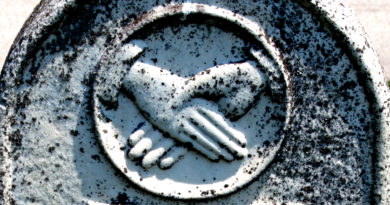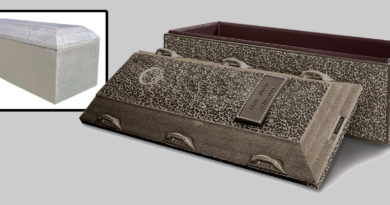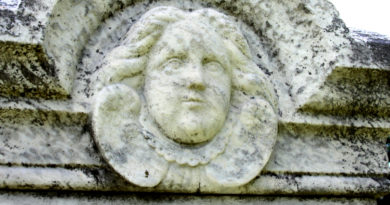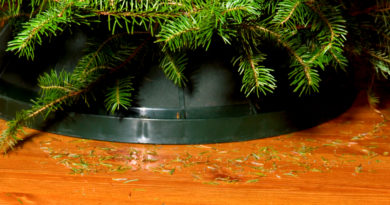How to Clean a Cemetery Tombstone or Marker
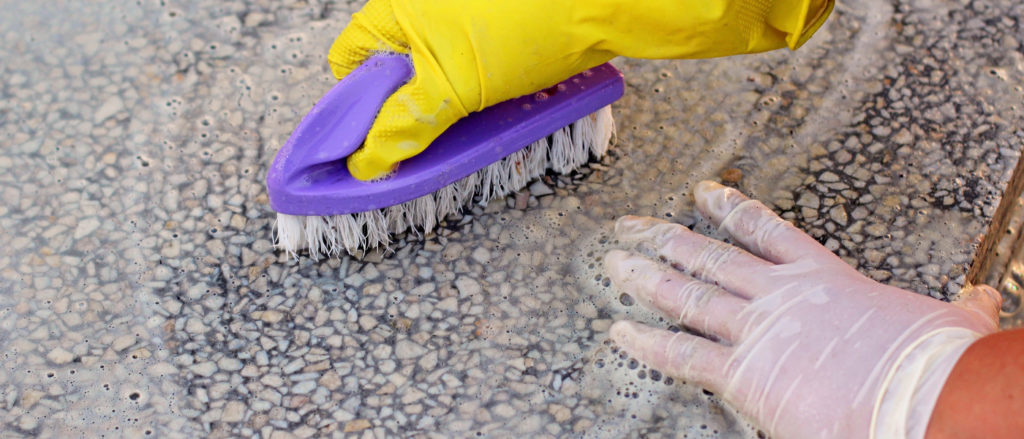
Photo © iStock.com/zbg2
Over time, exposure to the elements will cause tombstones, flat or slanted stone headstones, bronze memorial gravemarkers, memorial benches and other types of monuments to deteriorate. Among many causes, things such as sunlight, rain and snow, fluctuating temperatures, tree sap and falling leaves, bird droppings, plant growth, and even a cemetery’s irrigation system will generally impact the condition of your loved one’s memorial. Fortunately, a few basic cleaning supplies and some elbow grease can dramatically improve the appearance of a cemetery tombstone, headstone, gravemarker or memorial.
Important: What Not to Do
Any discussion about cleaning a headstone, marker or memorial must begin with a few cautions about the various things you should not do. Foremost, never attempt to clean a gravestone, marker or cemetery memorial that does not “belong to you.” In other words, if the deceased was not a member of your immediate family, you should not attempt any cleaning efforts without the express written consent of the owner/immediate family. In July 2014, for example, a well-meaning photographer faced criminal charges after he seriously damaged numerous historic tombstones in a Tennessee cemetery in order to improve the legibility of the inscriptions before taking pictures.
In addition, do not attempt to clean a headstone, marker or memorial that exhibits physical damage or instability. Among other things, signs of physical damage might include chipping, cracking, peeling, pitting, etc., of the surface; weathering of the inscription that renders it difficult/impossible to read; or (obviously) missing portions of the tombstone/marker. Moreover, you should not try to clean a marker that wobbles or might fall over/apart when you touch it.
As noted above, temperature fluctuations can affect the condition of cemetery monuments over time, but they can also impact the success of your basic cleaning efforts on any given day. Therefore, you should not try to clean a headstone, marker or memorial on a very hot or very cold day. Hard, dark stone, such as granite, and cast-metal markers grow surprisingly hot due to direct sunlight and/or higher temperatures, which can result in the rapid evaporation of the water you’ll need for basic cleaning. And cold/freezing temperatures will also impact your cleaning efforts, in addition to simply making you feel uncomfortable and in a hurry to finish.
Finally, never use household soap, dishwashing liquid, detergent, wax or any other cleaning product when cleaning a headstone, gravemarker or monument, regardless of how safe or gentle it claims to be on various surfaces. (This includes biodegradable and/or all-natural/organic products.) These products can prove acidic, abrasive and/or leave a residue on surfaces that will actually attract dirt in the future.
Materials You Will Need
Water: While a garden hose could conveniently provide all of the water you will need, in most cases this will prove impossible. Therefore, you will probably need to bring water with you — and carry it from your parking spot to the gravesite — so plan accordingly. Five gallons (~19 liters) is easily the minimum you should bring to clean even the smallest of cemetery markers, but the more water you have available, the better. A glass or plastic carboy, like those used for home or office water coolers, typically holds about 5-6 gallons (~19-23 liters) and is convenient to transport.
Sponge: You will need at least one natural or “sea” sponge to help you wet/wipe down the gravemarker during cleaning. Avoid using those cheap colored sponges because the dyes can actually transfer to stone and stain it, and resist the temptation to use one of those two-sided kitchen sponges with the “scrubby side” for the same reason.
Scraping Tools: Moss, lichen, algae and other organic growths flourish on the flat surfaces of gravestones, monuments and other markers when damp/shady conditions exist, as well as those hard-to-clean areas in/around inscriptions. Therefore, you might need a few wood or plastic scraping implements (do not use metal) of varying sizes to help remove these growths. Popsicle sticks, wood or nylon kitchen spatulas, bamboo “kabob” skewers, plastic toothed scrapers designed for cleaning cast-iron griddles, etc., can all prove handy.
Brushes: You should bring at least two brushes — a toothbrush and a larger scrub-type brush with soft bristles made from nylon or natural fibers. Like your sponges, these bristles should be uncolored so the dye doesn’t transfer to the stone and stain it. Whatever you do, do not use a brush with metal bristles, such as a BBQ/grill brush, or steel-wool pads, which can scratch the polished surface/coating of stone and metal markers.
Towels & Other Stuff: Bring plenty of old towels you don’t care about in order to dry off the cemetery marker and your hands. If you have sensitive skin, or just don’t like getting dirty, rubber gloves are nice. You’ll need at least one bucket to hold water and make it easier to wet/rinse your brushes and scraping tools, but two is better. A plastic trash bag will prove handy for hauling away dead leaves, old flower memorials, soiled towels, etc. Finally, bring a camera with you and take a photo of the marker or monument before you clean it, and then afterward. You will feel amazed at the visual differences between the two images — all due to your effort and care!
How to Clean a Cemetery Gravestone, Marker or Memorial
First, remove any loose dead leaves, old flower memorials, twigs/branches, etc., from around your loved one’s marker or monument. This simple act alone often significantly improves its appearance.
Next, thoroughly wet the headstone, gravemarker or memorial using your sponge and/or by pouring water over the surface(s) you wish to clean. Throughout the cleaning process, you should avoid dry-to-dry surface contact, so always keep the surface to be cleaned wet, and frequently dip/soak whatever cleaning implement you’re using in fresh water. And remember to change the water in your bucket(s) frequently so it’s clean.
After thoroughly soaking your sponge in clean water, use it to remove dirt by rubbing along the marker or monument’s surface in a circular motion, starting from the bottom, not the top. (For flat markers, start from one side and move to the other side.) The reason for this is that you need to rinse the cleaned surface frequently with fresh water throughout this process; starting at the top allows the dirty water to flow downward, possibly staining other areas you’ve yet to clean.
Once you have completely wiped the surface(s) with your sponge, rinse the marker or monument thoroughly with clean water. After the rinse water drains, examine the surface for any areas that need additional attention due to moss, lichen, algae or other organic growths, or particularly dirty/soiled spots. On these, again thoroughly wet the surface and then carefully use your wet brush(es), sponge(s) and/or scraping tool(s) to remove the offending growths or dirt.
Again, rinse the marker or monument thoroughly with clean/fresh water, and repeat as necessary until you are happy with the results.
Sources:
“‘Person of interest’ identified in case of damaged historic gravestones at Hawkins church,” by Jeff Bobo, July 29, 2014. www.timesnews.net. Retrieved July 06, 2017. http://e-edition.timesnews.net/article/9079536/suspect-allegedly-damaged-historic-gravestones-at-hawkins-church



